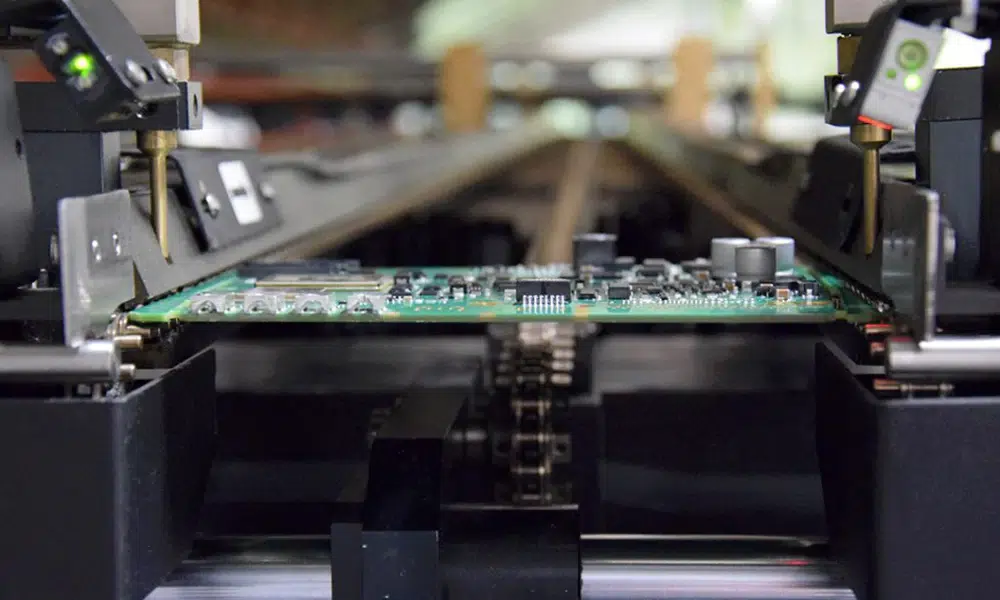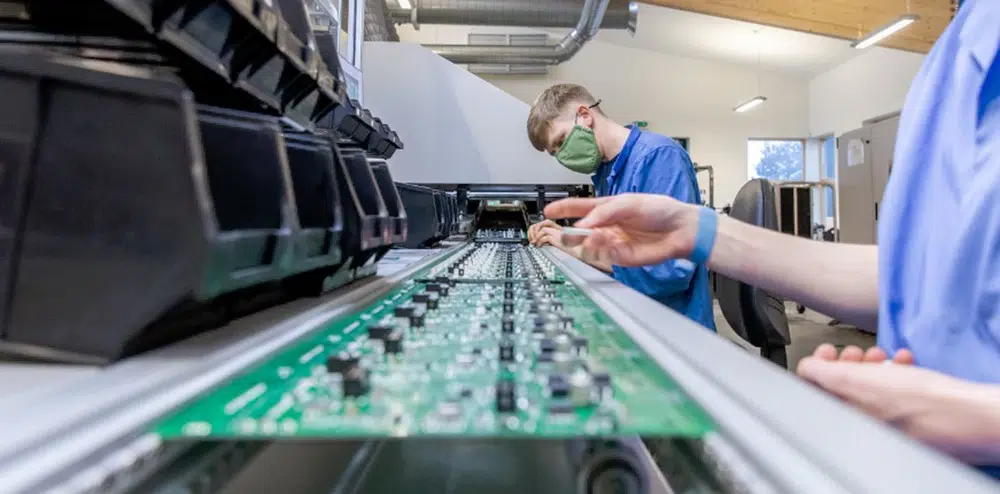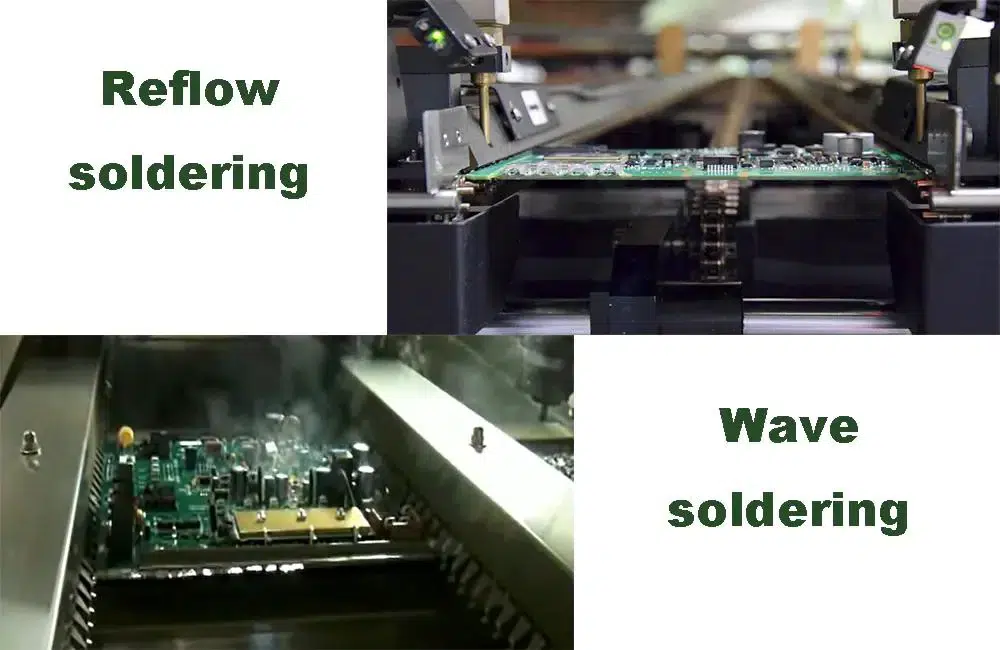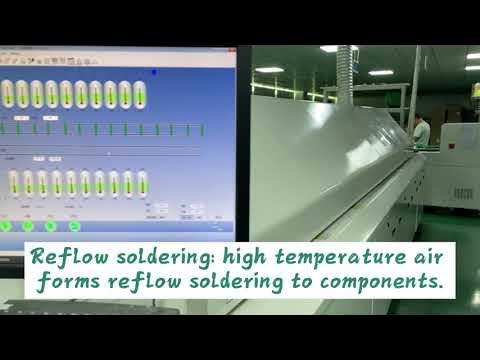Soldering, a fundamental process in electronics manufacturing, offers various methods, with reflow soldering and wave soldering standing as two primary techniques. Each method possesses unique characteristics and benefits, catering to different assembly requirements. Understanding the differences between reflow soldering vs. wave soldering is crucial for manufacturers striving for efficient, high-quality electronic production.
What is reflow soldering?

Reflow soldering is a widely adopted technique known for its precision and versatility in assembling SMT components onto printed circuit boards (PCBs). This method involves the use of solder paste, typically a mixture of tiny solder particles and flux, applied to the PCB’s pads before component placement.
Reflow soldering process
Application of solder paste: Automated stencil printing precisely deposits solder paste onto designated areas on the PCB.
Component placement: Automated pick-and-place machines accurately position SMT components onto the solder paste spots.
Heating stage: The assembly enters a reflow oven, where controlled heating melts the solder paste, forming reliable solder joints between the components and the PCB.
Cooling: The board cools, solidifying the solder joints and securing the components in place.
Advantages of reflow soldering
Miniaturization compatibility: Ideal for assembling smaller and densely packed components due to its precise application.
Versatility: Suited for a wide range of component sizes and types, from resistors to complex integrated circuits.
Controlled heating profiles: Allows for temperature profiles tailored to specific solder types and component requirements, reducing thermal stress.
Low defect rates: Produces fewer soldering defects like solder bridges or insufficient solder joints.
What is wave soldering?

Wave soldering primarily addresses through-hole technology (THT) components, allowing for efficient soldering of connectors, switches, and other leaded devices on PCBs.
Wave soldering process
Flux application: A flux is applied to the PCB, cleaning and preparing the surfaces for soldering.
Component insertion: THT components are manually or automatically inserted into the designated holes on the PCB.
Solder wave: The assembly moves over a molten solder wave, which selectively solders the exposed leads on the underside of the PCB.
Cooling and cleaning: The board cools down, and excess flux is cleaned off to ensure a clean finish.
Advantages of wave soldering
Speed and efficiency: Suitable for bulk production due to its ability to solder multiple connections simultaneously.
Cost-effectiveness: Especially beneficial for large-scale manufacturing with high throughput.
Reliability: Provides robust solder joints, especially for heavy-duty components subjected to mechanical stress.
What's the difference between reflow soldering vs wave soldering?

Component types: Reflow soldering is best suited for SMT components, while wave soldering is primarily used for THT components.
Precision vs. efficiency: Reflow soldering offers precision and adaptability for smaller, densely packed components, while wave soldering excels in efficiency for larger, bulkier components.
Controlled heating vs. simultaneous soldering: Reflow soldering uses controlled heating profiles, reducing thermal stress, whereas wave soldering involves simultaneous soldering of multiple connections.
Automation: Reflow soldering involves more automation in the component placement process, while wave soldering may require more manual insertion of components.
Choosing between reflow and wave soldering depends on factors like the types of components being used, production volume, cost considerations, and desired levels of precision or efficiency. Manufacturers often use a combination of these techniques depending on their specific assembly requirements.

Reflow soldering vs wave soldering - how to choose the right technique?
Component types: For predominantly SMT components, reflow soldering is preferred; for THT components, wave soldering is more suitable.
Production volume: High-volume production favors wave soldering, while smaller batches may benefit from the flexibility of reflow soldering.
Cost considerations: Initial setup costs and production speed impact the cost-effectiveness of each method.
Conclusion
In the realm of electronics manufacturing, the choice between reflow soldering and wave soldering hinges on the specific requirements of the project. Reflow soldering offers precision and adaptability for SMT components, while wave soldering excels in efficiency and reliability for THT assembly. Manufacturers must evaluate factors like component types, production volume, and cost implications to determine the most suitable soldering technique, ensuring high-quality and cost-effective PCB assembly.
Reflow soldering is a widely adopted technique known for its precision and versatility in assembling SMT components onto printed circuit boards (PCBs). This method involves the use of solder paste, typically a mixture of tiny solder particles and flux, applied to the PCB’s pads before component placement.
Wave soldering primarily addresses through-hole technology (THT) components, allowing for efficient soldering of connectors, switches, and other leaded devices on PCBs.
- Component types
- Precision vs. efficiency
- Controlled heating vs. simultaneous soldering
- Automation










